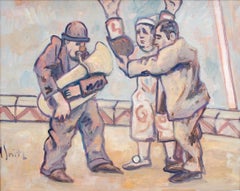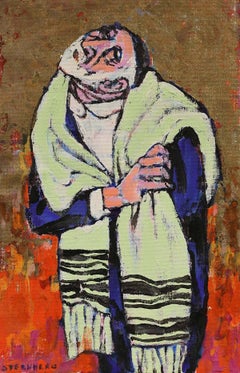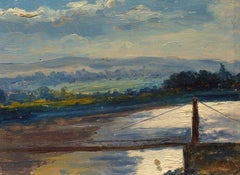Board Paintings
1920s Modern Board Paintings
Gouache, Illustration Board
20th Century Modern Board Paintings
Oil, Board
Late 20th Century Modern Board Paintings
Oil, Board
20th Century Modern Board Paintings
Acrylic, Illustration Board
20th Century Modern Board Paintings
Oil, Board
Mid-20th Century American Modern Board Paintings
Board, Pencil, Oil
1930s Modern Board Paintings
Oil, Board
1930s American Modern Board Paintings
Oil, Board
20th Century American Modern Board Paintings
Oil, Board
Mid-20th Century Modern Board Paintings
Oil, Board
1970s Modern Board Paintings
Oil, Board
1990s Modern Board Paintings
Oil, Board
Late 20th Century Modern Board Paintings
Acrylic, Board
1920s Modern Board Paintings
Canvas, Oil, Board
20th Century American Modern Board Paintings
Oil, Board
20th Century Modern Board Paintings
Oil, Board
20th Century Modern Board Paintings
Oil, Board
Early 20th Century Modern Board Paintings
Oil, Board
20th Century Modern Board Paintings
Oil, Board
1960s Modern Board Paintings
Oil, Board
20th Century Modern Board Paintings
Oil, Board
20th Century Modern Board Paintings
Watercolor, Gouache, Illustration Board
20th Century Modern Board Paintings
Oil, Board
Mid-20th Century Modern Board Paintings
Oil, Board
1950s American Modern Board Paintings
Board, Oil
20th Century Modern Board Paintings
Oil, Board
1950s American Modern Board Paintings
Foil
1960s Modern Board Paintings
Lacquer, Oil, Board
19th Century Modern Board Paintings
Board, Oil
1930s American Modern Board Paintings
Gouache, Board
20th Century Modern Board Paintings
Oil, Board
Mid-20th Century American Modern Board Paintings
Oil, Board
1960s Modern Board Paintings
Oil, Board
20th Century Modern Board Paintings
Oil, Board
1930s American Modern Board Paintings
Gouache, Oil, Board
20th Century Modern Board Paintings
Oil, Board
Mid-20th Century Modern Board Paintings
Tempera, Board
1970s Modern Board Paintings
Oil, Illustration Board, Canvas
20th Century Modern Board Paintings
Oil, Board
1970s Modern Board Paintings
Acrylic, Cardboard
20th Century Modern Board Paintings
Pastel, Cardboard
1980s American Modern Board Paintings
Oil, Cardboard, Canvas
Mid-20th Century American Modern Board Paintings
Board, Gouache
1960s American Modern Board Paintings
Oil, Board
Mid-20th Century American Modern Board Paintings
Oil, Board, Putty
1930s American Modern Board Paintings
Oil, Board
1960s American Modern Board Paintings
Board, Oil
1930s American Modern Board Paintings
Oil, Board
20th Century American Modern Board Paintings
Oil, Board
1920s American Modern Board Paintings
Oil, Canvas, Board
Late 20th Century Modern Board Paintings
Oil, Illustration Board
1930s American Modern Board Paintings
Oil, Board
21st Century and Contemporary Modern Board Paintings
Oil, Linen, Board
2010s Modern Board Paintings
Mixed Media, Oil, Acrylic, Board
Mid-20th Century American Modern Board Paintings
Oil, Board
Early 1900s Modern Board Paintings
Oil, Board
Mid-20th Century American Modern Board Paintings
Board, Oil
20th Century Modern Board Paintings
Board, Oil




